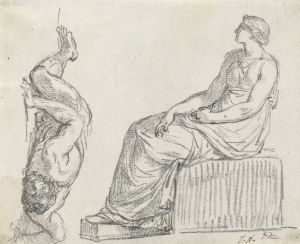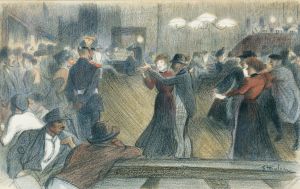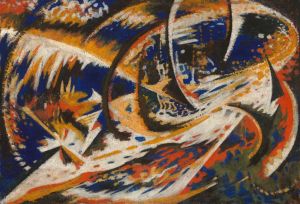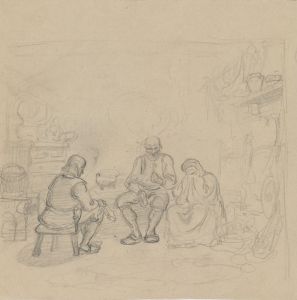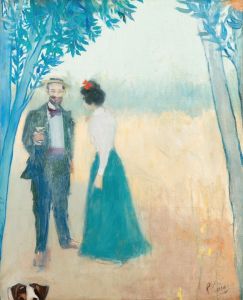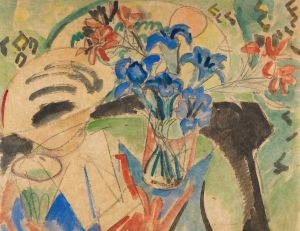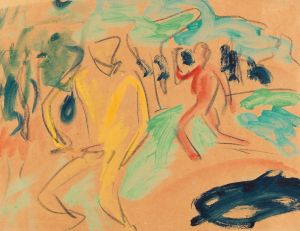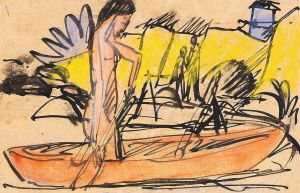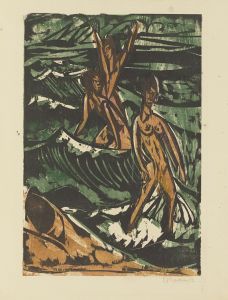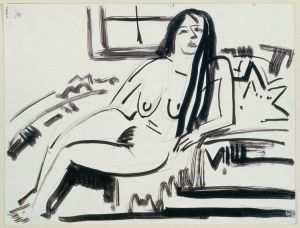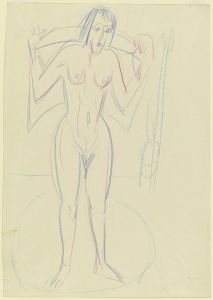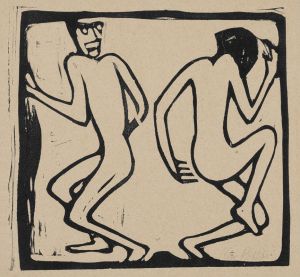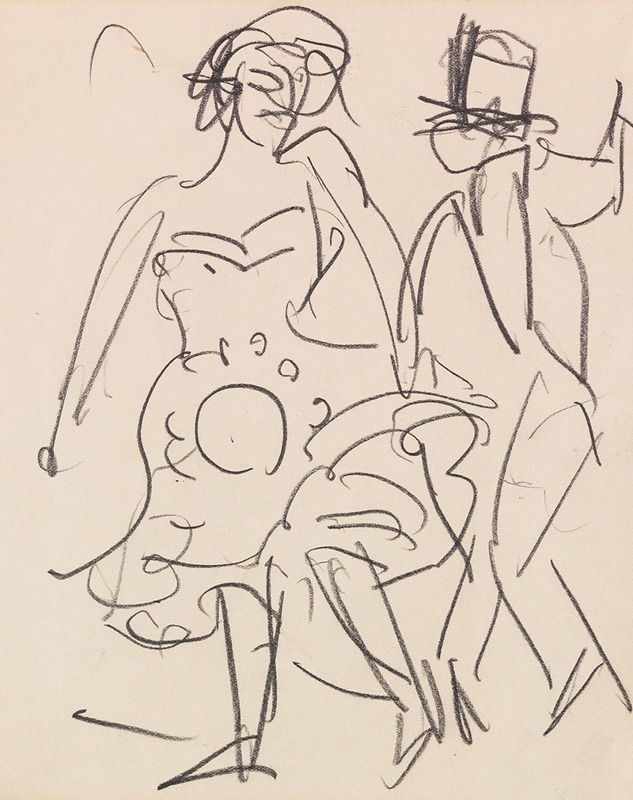
Paar beim Tanz
A hand-painted replica of Ernst Ludwig Kirchner’s masterpiece Paar beim Tanz, meticulously crafted by professional artists to capture the true essence of the original. Each piece is created with museum-quality canvas and rare mineral pigments, carefully painted by experienced artists with delicate brushstrokes and rich, layered colors to perfectly recreate the texture of the original artwork. Unlike machine-printed reproductions, this hand-painted version brings the painting to life, infused with the artist’s emotions and skill in every stroke. Whether for personal collection or home decoration, it instantly elevates the artistic atmosphere of any space.
Ernst Ludwig Kirchner's painting Paar beim Tanz (translated as "Couple Dancing") is a notable work by the German Expressionist artist, who was a founding member of the influential art movement Die Brücke (The Bridge). Created in 1914, the painting exemplifies Kirchner's dynamic and vibrant style, which sought to capture the energy and emotional intensity of modern life.
The artwork depicts a couple engaged in a lively dance, rendered in Kirchner's characteristic bold and angular forms. The figures are elongated and stylized, emphasizing movement and rhythm over realistic proportions. The use of vivid, non-naturalistic colors and strong contrasts reflects the influence of Fauvism and other modern art movements of the early 20th century. Kirchner's brushwork is expressive and energetic, further enhancing the sense of motion and vitality in the scene.
Paar beim Tanz is often interpreted as a reflection of the cultural and social atmosphere of pre-World War I Germany, particularly the vibrant nightlife and urban dynamism of cities like Berlin. Kirchner was deeply inspired by the modern metropolis and frequently depicted scenes of urban life, including cabarets, theaters, and dance halls. These settings provided a rich source of inspiration for his exploration of human emotion, movement, and the complexities of modern existence.
The painting is also significant within the context of Kirchner's broader body of work. As a member of Die Brücke, Kirchner sought to break away from traditional academic art and embrace a more spontaneous and expressive approach. The group's work often emphasized raw emotion, bold colors, and a rejection of conventional perspective, all of which are evident in Paar beim Tanz. This painting, like many of Kirchner's works, demonstrates his interest in the interplay between human figures and their environment, as well as his ability to convey a sense of immediacy and intensity.
Today, Paar beim Tanz is recognized as an important example of German Expressionism and Kirchner's artistic legacy. It is housed in the collection of the Brücke-Museum in Berlin, which is dedicated to the works of Kirchner and other members of Die Brücke. The museum provides valuable insight into the development of Expressionism and its impact on modern art.
Ernst Ludwig Kirchner's contributions to art history remain highly regarded, and Paar beim Tanz continues to be celebrated as a testament to his innovative vision and his ability to capture the spirit of his time.





